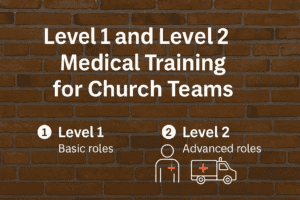The concept of leakage in threat assessment plays a crucial role in identifying potential threats and preventing harmful incidents.
Leakage refers to the communication of an intent to harm a target, shared with a third party by various means such as letters, diaries, journals, blogs, videos, emails, voicemails, and social media platforms.
This type of warning behavior often indicates a preoccupation with the target and suggests the individual may be in the research, planning, or implementation stages of an attack. Understanding leakage can make all the difference in threat assessment, as it provides valuable information about potential risks and helps authorities intervene before harm is done.
In the field of threat assessment, professionals are trained to analyze different behaviors to determine potential threats to public safety. Leakage stands out as an important factor in assessing potential attackers, as it shows a clear and deliberate intent to cause harm. These communications have been observed in various high-profile attacks, making leakage an essential part of threat assessment procedures.
Understanding Leakage
Definition and Significance
Leakage refers to a phenomenon in which an individual or group unintentionally or deliberately reveals information, usually through communication, about a planned threat or attack before it occurs. The significance of understanding leakage lies in its potential to provide early warning behavior that can help prevent or mitigate the consequences of such threats.
Various forms of leakage can alert security officials or law enforcement professionals to potential security risks, allowing them to take preventative measures. These revelations often happen through various channels, such as social media, verbal statements, or written statements.
Forms of Leakage
- Verbal statements: An individual may inadvertently or purposely disclose information about their intentions during a conversation, either face-to-face or over the phone. This type of leakage is more challenging to track and analyze, but it can be a valuable source of information if the statements are reported to the appropriate authorities. An example of this could be a person discussing plans for a violent act with a friend or family member.
- Written statements: This form of leakage involves publishing or distributing written material detailing an individual or group’s plans or intentions. It may include letters, emails, journals, diaries, and even manifestos outlining the motives and objectives behind an impending threat. Written statements are easier to track and analyze, making them crucial for identifying potential security risks.
- Social media: With the growing popularity of online platforms and communities, leakage can also occur through social media posts and messages. Social media platforms provide an open and easily accessible medium for individuals to share their thoughts, opinions, and sometimes, alarming plans. Monitoring and analyzing this type of leakage have become increasingly critical for threat assessment professionals.
Incident Case Studies
Past Cases of Leakage
It has been observed that in many cases, attackers communicate their intentions before carrying out acts of targeted violence. For instance, in the case of mass murders, a majority of perpetrators have revealed their plans to some extent.
Notable incidents of leakage include the 1999 Columbine High School shooting and the Bath School disaster of 1927. In both cases, the attackers displayed warning signs and mentioned their intentions to carry out acts of extreme violence. Such perpetrators often target public figures, educational institutions, or locations with a high concentration of individuals.
Various types of targeted violence, such as assassinations and mass shootings, can be found in historical and recent cases. Some examples include:
- Adult mass murders: The Nidal Hasan 2009 Fort Hood attack, where the perpetrator leaked information to online acquaintances before committing the act.
- Adolescent mass murders: The Sandy Hook Elementary School shooting in 2012, where the attacker exhibited warning signs and made references to other mass shootings.
- Public figures: The attempted assassination of Ronald Reagan in 1981 and the murder of John Lennon in 1980, both of which involved leaked information or warning signs before the events.
Analysis of Targeted Violence
The knowledge of leakage, combined with the examination of warning behaviors in threat assessment, allows experts to better understand patterns and identify potential attacks.
The following are key aspects in targeted violence analysis:
- Target selection: Attackers often choose specific individuals or locations based on personal grievances, ideologies, or intended impact on the public.
- Motive: A deeper understanding of the underlying factors driving the attacker may reveal potential targets or escalation of risk.
- Patterns of behavior: Recognizing patterns in attackers’ communications or activities can help in identifying risk factors and early intervention opportunities.
Leakage in Threat Assessment
Leakage is particularly useful for law enforcement and risk management professionals in preventing incidents such as school or campus shootings and attacks on public officials.
Evaluation of Threats
One key aspect of leakage in threat assessment is the evaluation of threats. This involves analyzing various factors such as direct threats, indirect threats, fixation, and identification to determine the potential risk of an individual. Direct threats may include explicit intentions to harm others, while indirect threats can manifest as subtle warning signs through an individual’s behavior or communication.
In the context of campus shootings, for instance, some assailants have exhibited leakage by sharing their violent intentions with third parties or posting disturbing content online. Law enforcement agencies and professionals must actively monitor these warning signs and use them to assess the credibility of a threat and take appropriate preventive measures.
Legal and Ethical Considerations
Law and Responsibility
Leakage can have significant legal and ethical implications, particularly relating to law enforcement and mental health professionals’ responsibilities.
A landmark legal case often cited in threat assessment literature is the Tarasoff case. In this case, the California Supreme Court ruled that mental health professionals have a duty to protect potential victims of their clients if they believe that their client poses a serious risk of violence. This ruling has since been incorporated into the law in several forms around the United States, establishing the legal obligations of mental health professionals in such situations.
Consequently, identifying and reporting leakage is critical for professionals involved in threat assessment, as it can help prevent acts of violence while fulfilling their legal responsibilities. However, balancing these duties with ethical considerations can become a complex issue.
Mental Health and Privacy
In many cases, the individuals assessed for potential threats are those receiving mental health care or support, which raises concerns around patient privacy and the ethical implications of monitoring their communications.
The ethical dilemma arises when mental health professionals must weigh the need for preserving patient confidentiality and trust against the potential for harm to others. In order to navigate these complexities, mental health professionals must stay informed about their legal obligations and follow best practices in threat assessment.
Moreover, it is crucial for threat assessment professionals to stay up to date with the relevant ethical and legal guidelines and engage in careful consideration when assessing situations involving leakage. This may include consulting with peers, legal counsel, or professional organizations to ensure their actions uphold high ethical standards.
Preventive Strategies and Interventions

Risk Management Practices
Effective risk management practices play a critical role in preventing school violence and other threatening situations. A key component of these practices is the threat assessment process, which involves identifying and assessing individuals who exhibit warning behaviors. This process allows for the development of tailored interventions for at-risk individuals, thus preventing the escalation of violent incidents.
The Berlin Leaking Project and the Networks Against School Shootings Project (NETWASS) both emphasize the importance of identifying leakage and responding appropriately to these warning signs.
To further enhance risk management, schools should also consider implementing the following measures:
- Regular safety assessments and audits
- Establishment of a threat assessment team
- Training programs for staff and students to recognize warning behaviors
- Creation of reporting mechanisms for concerns
- Development of a school-wide safety plan
Mental Health Interventions
Complementing risk management practices, mental health interventions form an essential pillar of preventive strategies.
These interventions focus on identifying and addressing the social, emotional, and psychological needs of students, especially those displaying warning behaviors.
Providing individualized support to these students helps mitigate risk factors for violence.
Approaches may include:
- Referrals to mental health professionals for assessment and treatment
- In-school counseling services
- Behavioral intervention plans
- Conflict resolution and anger management programs
- Collaboration with family members, community resources, and law enforcement agencies
By addressing the unique needs of students, mental health interventions contribute to a safer school environment and reduce the likelihood of violent incidents.
Frequently Asked Questions
What are pre-indicators that suggest a person might engage in violence?
Pre-indicators of potential violence may include, but are not limited to, changes in behavior, aggressive outbursts, threats, or threatening language.
Other signs to watch out for are withdrawal from social interactions, and fascination with weapons or violence-related topics. It is essential that these signs be taken seriously and reported to the appropriate authorities for further evaluation and risk assessment.
Which behaviors are not typically related to workplace assailants?
Workplace assailants usually do not exhibit isolated incidents of frustration, occasional disputes, being assertive, or expressing criticism.
Normal workplace stress and disagreements are not necessarily indicative of potential violent behavior. It’s crucial to differentiate between typical work-related stress and more concerning signs of potential violence.
How can a desire for retaliation manifest in potential threat scenarios?
A desire for retaliation can manifest in various ways, from direct confrontations and physical altercations to verbal threats, stalking or even planning schemes that involve harm to others.
This desire can be triggered by a sense of injustice or perceived wrongs, causing individuals to harbor intense emotions such as anger and resentment that could escalate potential threat scenarios.
What statements or actions are inconsistent with violent ideation?
Statements or actions that show empathy, a desire for compromise or resolution, and efforts to better understand and improve relationships are inconsistent with violent ideation.
Additionally, individuals who demonstrate an awareness and willingness to seek help or talk openly about their emotions and challenges tend to have lower risks for violent behavior.
At what frequency are active shooter incidents reported?
The frequency of active shooter incidents can vary based on location, time, and other factors.
It’s challenging to provide an exact number, but it is important to remember that while these events are tragic, they remain relatively rare occurrences in comparison to other forms of violence. Nevertheless, regular threat assessment and monitoring protocols should be implemented as preventive measures.
What are the steps involved in conducting a threat assessment process?
The threat assessment process typically involves several steps:
- Identifying potential threats or concerns, can come from various sources such as reports from employees, supervisors, or even external sources.
- Gathering information and conducting interviews with relevant parties to gain a better understanding of the situation.
- Assessing risk levels based on the collected information.
- Utilizing tools and techniques to analyze potential dangers.
- Developing and implementing strategies or interventions to mitigate or reduce risks.
- Monitoring the situation and evaluating the effectiveness of implemented strategies, adjusting as necessary over time.








